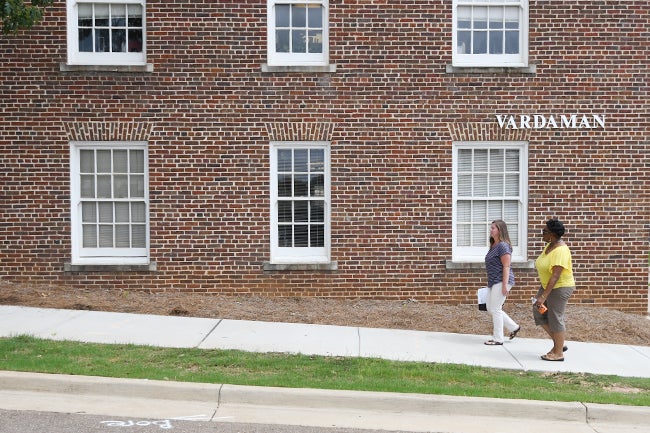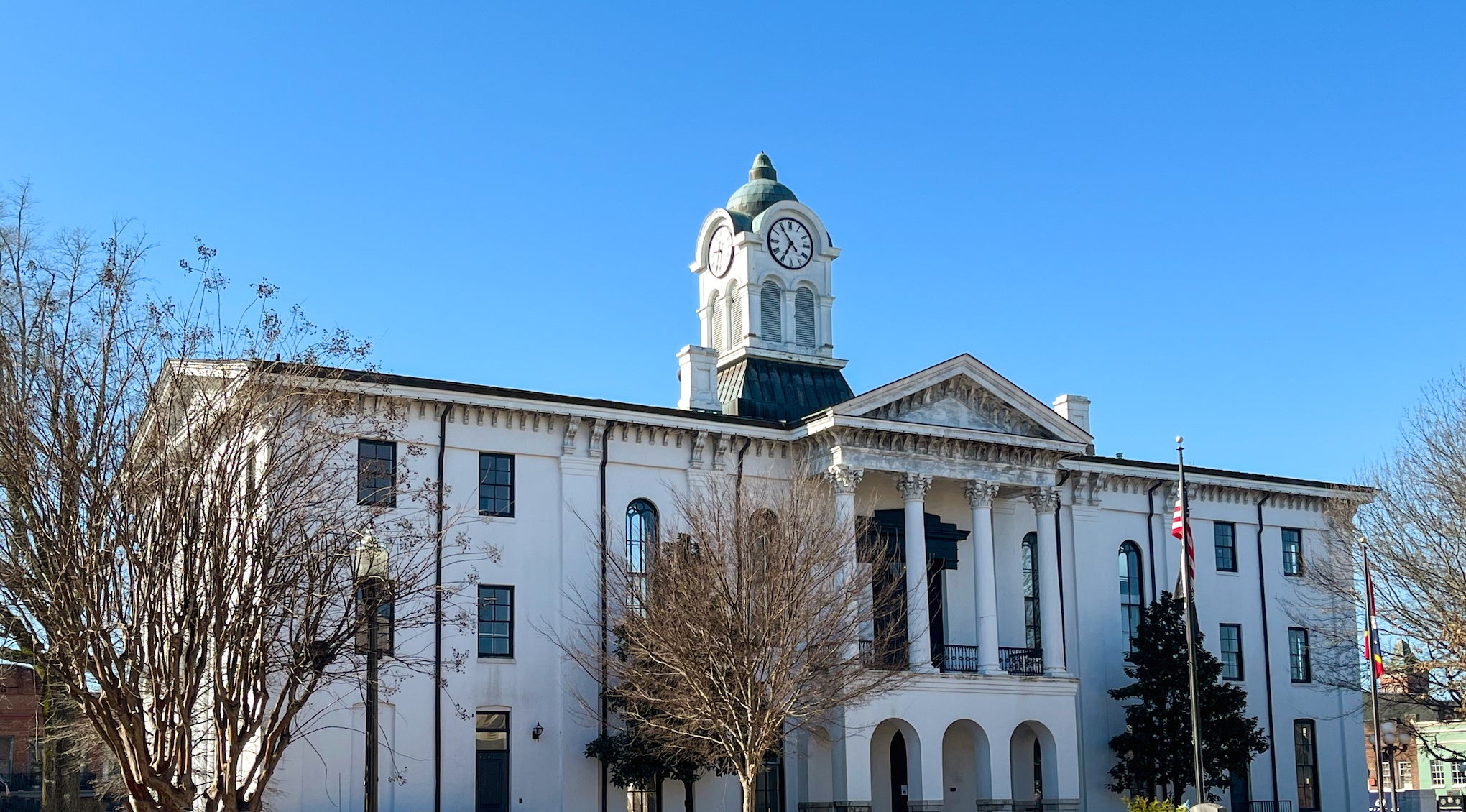Ole Miss will rename Vardaman Hall, contextualize several campus spots tied to Confederate history
Published 10:41 am Thursday, July 6, 2017

- Vardaman Hall at the University of Mississippi, in Oxford, Miss. on Thursday, July 6, 2017. (Bruce Newman, Oxford Eagle via AP)
The University of Mississippi announced the recommendations it will be implementing from the Chancellor’s Advisory Committee on History and Context. The communication outlining the accepted recommendations as well as the committee’s final report can be accessed at context.OleMiss.edu.
Chancellor Jeffrey Vitter established the CACHC in summer 2016 to address Recommendation 5 of the university’s 2014 Action Plan, a comprehensive set of recommendations related to improving the campus’ environment for diversity and inclusion. Recommendation 5 of the action plan urged the university to “offer more history, putting the past into context” and to do so “without attempts to erase history, even some difficult history.”
“Contextualization is an important extension of a university’s responsibility to educate and provides an opportunity to learn from history,” Vitter said. “As an educational institution, it is imperative we foster a learning environment and fulfill our mission by pursuing knowledge and understanding. The CACHC embodied this approach in its work, recognizing that while our history is not by any means all that we are, it remains an important part of who we are.”
During the 2016-17 academic year, the CACHC worked to complete its two-phase charge. The initial task of the committee was to recommend which additional physical sites on the Oxford campus (beyond those already completed) should be contextualized, so as to explain the environment in which they were created or named.
Secondly, the committee was tasked with designing the content and format to contextualize the recommended sites. In the final report, the committee explained that “contextualizing the campus reminds us of the enormity and complexity of our shared past” and that “done correctly, and therefore carefully, contextualization is an additive process, not a subtractive one.”
The following Oxford campus sites will be contextualized with plaques: Lamar Hall, Barnard Observatory, Longstreet Hall and George Hall. The antebellum sites of Barnard Observatory, the Croft Building, the Lyceum and Hilgard Cut (a railroad cut on campus) will be collectively contextualized with one plaque to be placed just west of Croft, within sight of the three buildings, noting that these four projects were built with slave labor.
In addition to contextualizing these sites, the university will seek to rename Vardaman Hall. In applying guidelines developed by the Committee to Establish Principles on Renaming at Yale University, the CACHC found that James K. Vardaman was an exceptional case for his time because he was an individual who “actively promoted some morally odious practice, or dedicated much of [his life] to upholding that practice.”
Vardaman Hall was approved by the Board of Trustees of the Mississippi Institutions of Higher Learning in May 2016 for substantial renovation, an event that often results in consideration of renaming the building. After fundraising and renovation are completed over the next several years, renaming of Vardaman Hall will occur through university processes and be subject to IHL approval.
Additionally, signage at the Paul B. Johnson Commons will be altered to add “Sr.” to clarify that it is named after Paul B. Johnson Sr.
In addition to the seven contextualization sites, the committee’s final report put forth two supplemental sites of university history for contextualization. The first is a plaque for the stained-glass windows in Ventress Hall dedicated to the sacrifice of the University Greys, a company of primarily UM students who fought in the Civil War and suffered 100 percent casualties. The second is for the Confederate Cemetery and related memorial, for which the committee recommended adding individual gravestones to recognize the sacrifice of each person known to be buried there as well as a marker in an appropriate location to recognize the men from Lafayette County who served in the U.S. Colored Troops during the Civil War.
These two supplemental sites were not part of the original list of seven contextualization sites accepted by Chancellor Vitter in February 2017 and were therefore not included in the online form to receive public input. To ensure continued community engagement, the university is seeking public input at context.OleMiss.edu prior to taking any action related to the Ventress stained-glass windows and the Confederate Cemetery.
“Throughout this process, the university has sought to listen and engage in constructive and transparent conversations with all university stakeholders,” Vitter said. “In the past year, the product of the CACHC has been enriched and informed by the hundreds of individuals who provided feedback in person, through online web forms, and through individual letters, emails and calls. I am confident that our decisions with regard to these two supplemental items will be equally enhanced by public input.”
The public review and comment period for the two additional items recommended by the CACHC will be open at context.OleMiss.edu through July 31, 2017.
The university’s contextualization approach was established as an academically focused and fact-focused process with the 14 CACHC members selected from nearly 100 nominations received from the university community. CACHC membership was based upon expertise in relevant subject matters such as history, sociology, English, law or race relations; a demonstrated track record of consensus building and collaboration; a deep understanding of the UM community and culture; experience in commemoration and contextualization of historic sites; and a commitment to a process that is inclusive, respectful, civil, candid, transparent and honors the UM Creed.
“As the work of the CACHC concludes and our formal contextualization process draws to a close, we extend profound thanks to the CACHC members for their tremendous work on this challenging but extremely important task for our university,” Vitter said.
“I also want to commend our university community for staying engaged and supportive throughout the process. Even when our views differ on issues of vital importance to Ole Miss, Mississippi and the nation, we remain inextricably bound together by our belief in the university’s ability to positively transform lives, just as it has changed many of our own lives for the better.”
The university has tasked the vice chancellor for university relations and the vice chancellor for diversity and community engagement with oversight and coordination of implementation of the recommendations including funding and timeline for ordering and installing plaques and markers.





